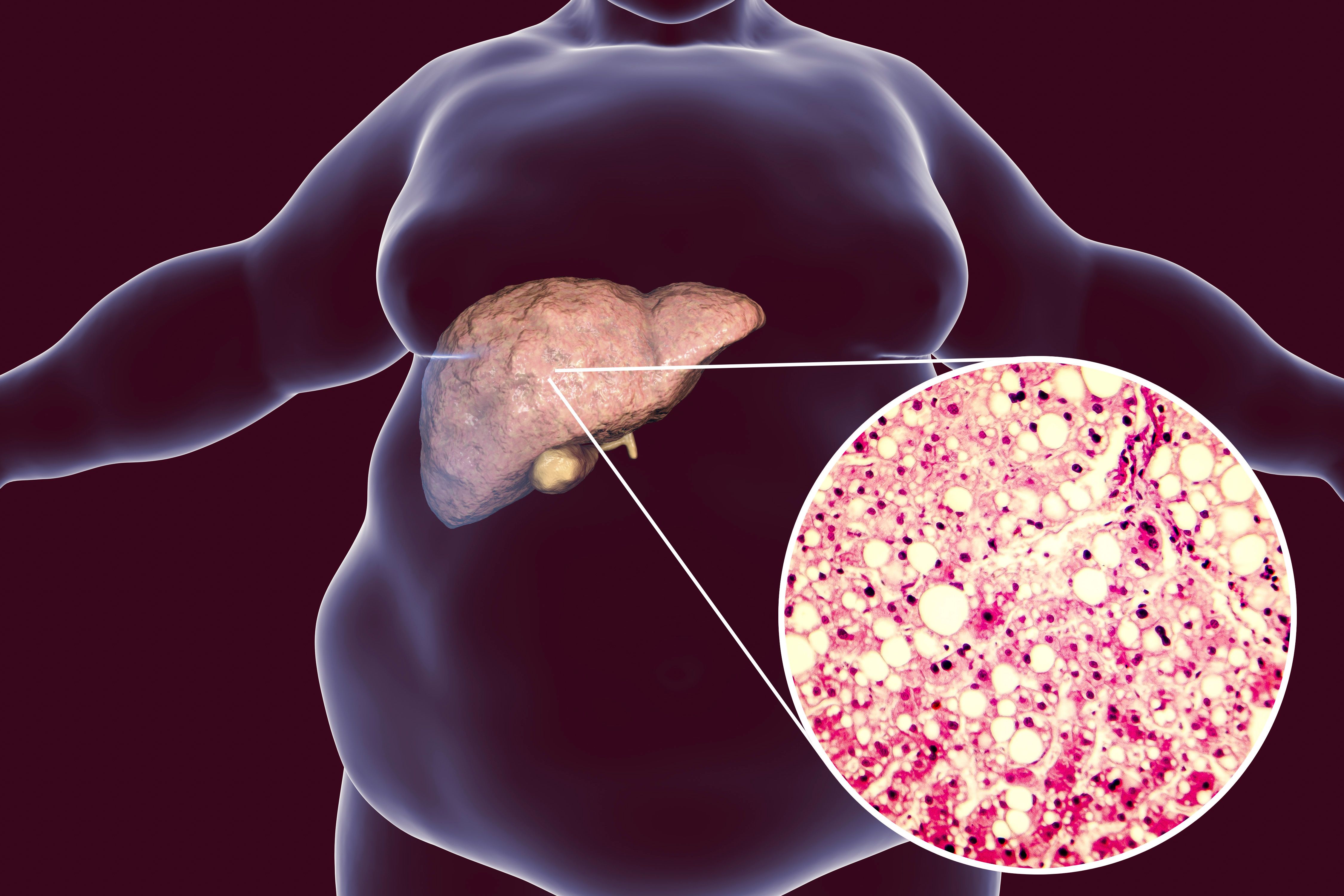Vascular Endothelial Growth Factor B Antagonism Fights Non-Alcoholic Fatty Liver Disease
This finding, in addition to published clinical data, suggests VEGF-B signaling may play a significant role in human non-alcoholic fatty liver disease pathophysiology.

Vascular Endothelial Growth Factor B (VEGF-B) antagonism might be a therapeutic strategy for the treatment of non-alcoholic fatty liver disease (NAFLD), a common comorbidity among patients with type 2 diabetes and the most prevalent form of chronic liver disease, according to a paper published in Journal of Hepatology.
Investigators from Sweden first used 3 different groups of mice in order to further their understanding of VEGF-B signaling and the contribution to hepatosteatosis and NAFLD in type 2 diabetes, they said. These mice groups included those who were treated with a neutralizing antibody against VEGF-B, or mice with adipocyte-specific overexpression- or under-expression of VEGF-B, the study authors wrote. The mice were fed a 6-month high-fat diet or chow diet after which point the investigators assessed the development of NAFLD in the mice.
The study authors observed that the control mice who received the high-fat diet displayed increased activation of immune cells and reduced VEGF-B activity. While they noted that dietary intake is relevant to hepatic lipid accumulation, the investigators found that VEGF-B deficiency did not affect food consumption in the chow-fed mice.
After looking at the VEGF-B expression in the white adipose tissues (WAT), the investigators noted a 4-fold increase in the level of VEGF-B in mice with adipocyte-specific overexpression and a 2-fold decreased level in the mice with adipocyte-specific under-expression, compared to the respective control groups. They added that hepatosteatosis, liver inflammation, hepatocyte ballooning and NAFLD activity score were increased among the mice with adipocyte-specific overexpression compared to the high-fat diet fed mice.
For the human arm of the study, the investigators took WAT biopsies from 24 patients with NAFLD and 24 without and analyzed the samples for VEGF-B expression, they explained. The study authors used the data from the samples to determine the presence of plasma biomarkers for liver damage. These patients were all women with obesity who were matched for age, BMI, and type 2 diabetes status.
VEGF-B expression was up-regulated by 38 percent in subcutaneous WAT in subjects with NAFLD, compared to those without. Expression was primarily related to adipocytes, and closely localized with the FABP4 marker, whereas minor VEGF-B expression was detected in both ECs and inflammatory cells, the study authors wrote.
“VEGF-B expression correlated positively with decreased liver function and NAFLD degree,” the study authors wrote. “VEGF-B correlation to NAFLD development was specific to the VEGF-B ligand, as no correlation between VEGF levels and liver dysfunction were detected. Our data suggest that VEGF-B antagonism represents an attractive target to combat human NAFLD by targeting the lipolytic activity in WAT.”
The study authors also wrote that NAFLD development proceeds from an activation of VEGF-B signaling in the WAT and not the liver. They believe that targeting and inhibiting the VEGFR1-EC axis in WAT could be an underlying mechanism for reduced inflammation. However, in obesity, VEGF-B overexpression in the WAT increases WAT vascularization is a risk for developing metabolic disease, and does not play a role in angiogenesis in most normal conditions, they said.
“Taken together, analyses of previous published clinical data from NAFLD patients combined with our data analyses suggest that VEGF-B signaling may play a significant role in human NAFLD pathophysiology and represent an attractive target for treating NAFLD,” the study authors concluded.
